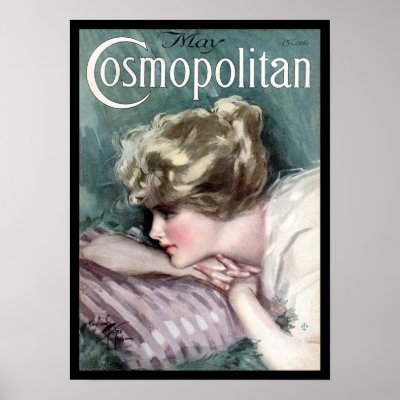Cosmopolitan offers information on sex and relationships, fashion, health and beauty, including tips on makeup and hair, and also includes celebrity gossip, career tips, and self-improvement advice. Geared towards women who are financially stable and even rich, Cosmo advertises clothing and perfume from designers such as Dolce & Gabana and Lancôme, but also advertises more low-end companies, such as JCPenney, and common hair and make-up companies like Garnier and Maybelline.
Although Cosmo is mostly geared towards women who care about their looks and sex, the magazine also includes real-life stories and advice on how to stay healthy, take care of your body, and avoid or handle situations, such as stalking and sexual harassment. Cosmopolitan also reaches out to the career woman by offering advice on how to land the perfect job, get ahead at work, and handle difficult work-related situations.
Cosmopolitan focuses on the limbic, or emotional, part of the brain. The magazine uses sexy words and images to make you feel envious towards the people in the magazine so that you will follow the advice given and buy the products advertised. Cosmopolitan makes you think that you can always get smarter and sexier than you already are by following its advice.
Cosmopolitan's Fun, Fearless Female Campaign. Video courtesy of YouTube.
Three trends that Cosmo follows are epistemological, economic, and aesthetic. Bright, bold, sexy words (such as sex, arousal, and erotic) are enhanced by pictures of sexy men and women who are barely clothed and are often portrayed engaging in romantic activities. Cosmopolitan underwent an economic shift when owner John Brisben Walker sold the magazine in 1905 to William Randolph Hearst. Because Hearst owned many other enterprises, his legacy became the magazine’s current owner, corporate conglomerate Hearst Communications, Inc. Aesthetically, Cosmopolitan has shifted from a more conservative, modest look to the more glamorous and sexed look it has today. There has also been media convergence within the magazine. Instead of just publishing a magazine every month, Hearst Communications also publishes Cosmo books, has an extensive website that features online articles, videos, quizzes, and forums, has Facebook and Twitter pages, and has a radio station on satellite radio, so readers now have many ways they can access information.
 |
Covers from Cosmopolitan magazine, May 1915 issue (left) and March 2011 issue (right). Photos courtesy of Zazzle.com and FabulousBuzz.com
You're welcome, ladies. Video courtesy of www.cosmopolitan.com
Cosmopolitan uses TONS of persuasive techniques to influence their readers. Symbols such as celebrities as icons and the phrase “fun, fearless female” make readers think that reading the magazine will make them sexier and stronger. Beautiful people are used a lot in Cosmo for the exact same reason, and the magazine also uses the group dynamic of “we women” to form a sense of community amongst readers. Scientific evidence and testimonials are often used in the more informative articles to prove what the authors are trying to teach you. Health and diet articles often quote doctors and fitness experts to prove what is good for you and what is not. Bandwagon is also a huge persuasive technique as Cosmo targets young women and makes them think that if lots of other women or female celebrities are following a certain style or trend, then their readers will, too. The magazine also uses humor in several articles, especially their monthly “Confessions” articles, to draw in readers in a different way.

Excellent ORAL presentation/blog post on COSMO, Melinda.
ReplyDeleteYou cover much ground here, and use both our power tools and Web 2.0 tools to great advantage here.
"Bachelor Blowout." Hilarious. (Bright bold sexy words and images.)
Really well done - you make the magazine come alive with your analysis.
Bravo,
Dr. W